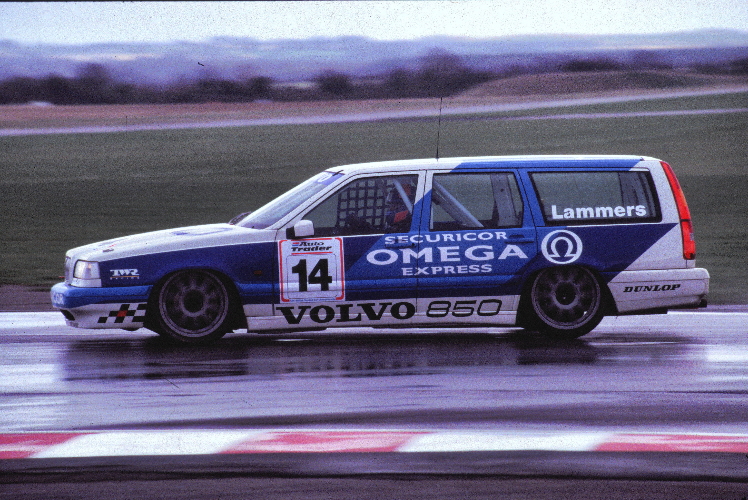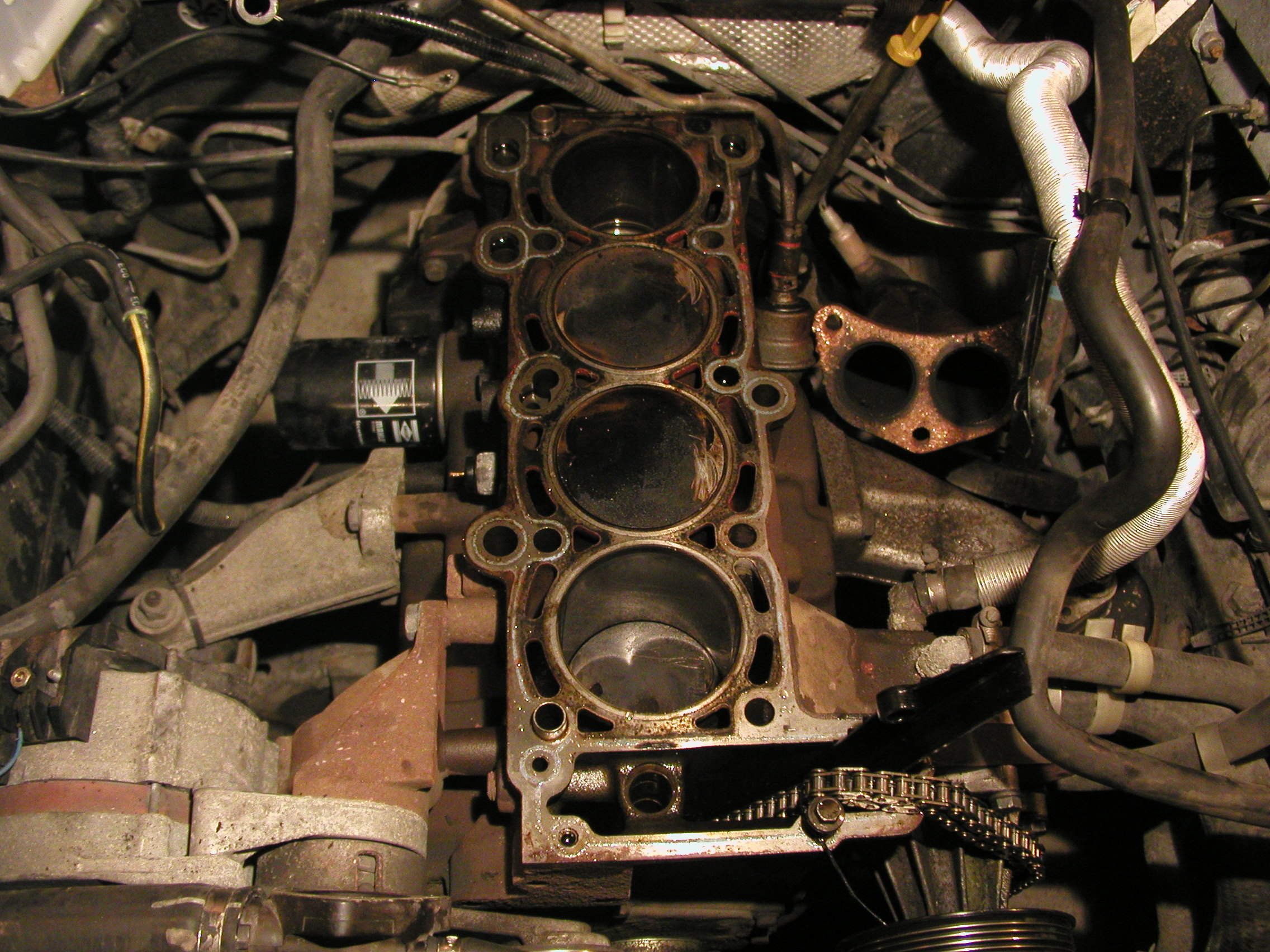|
Volvo Modular Engine
The Volvo Modular Engine is a family of straight-four, straight-five, and straight-six automobile piston engines that was produced by Volvo Cars in Skövde, Sweden from 1990 until 2016. All engines feature an aluminium engine block and aluminium cylinder head, forged steel connecting rods, aluminium pistons and double overhead camshafts. History The ''Volvo Modular Engine'' was developed as part of ''Project Galaxy'' which began in the late 1970s. The prototype engines called ''X-100'' had only four cylinders but already featured the sandwich and all aluminium construction of the later production variants. Early prototypes of the ''X-100'' were designed similar to the existing redblock engines with a single camshaft and the oil filter mounted on the side of the engine rather than the bottom. The first available engine was the B6304F which debuted in August 1990 in the Volvo 960. A year later, with the introduction of the Volvo 850 in June 1991, the first five-cylinder variant ... [...More Info...] [...Related Items...] OR: [Wikipedia] [Google] [Baidu] |
Volvo S40
The Volvo S40 is a series of subcompact executive cars marketed and produced by the Swedish manufacturer Volvo Cars from 1995 to 2012, offered as a more mainstream alternative to the compact executive Volvo 850 and later the Volvo S60 to compete in a lower pricing bracket. The S40 was more or less positioned against premium-leaning small family cars like the Volkswagen Jetta as well as some mass-market large family cars. The first generation (1995–2004) was introduced in 1995 with the S40 (S from saloon) and V40 (V from versatility, estate) cars. The second generation was released in 2003, and the estate variant became differentiated from the sedan, having its name changed to V50. The range was replaced by the Volvo V40 five door hatchback in 2012. __TOC__ First generation (1995–2004) During August 1995, Volvo released its new series, with the intention of calling the cars S4 and F4. However, as Audi had already reserved the "S4" name, Volvo opted to name the ... [...More Info...] [...Related Items...] OR: [Wikipedia] [Google] [Baidu] |
Volvo S80
The Volvo S80 is an executive car produced by the Swedish manufacturer Volvo Cars from 1998 to 2016 across two generations. It took the place of the rear-wheel-drive S90 as Volvo's flagship sedan. The first generation (1998–2006) was made available for the 1999 model year. It has since been built at the Torslanda Works in Gothenburg, Sweden, with a few 1999 model year cars for the North American market built at Volvo's Halifax Assembly plant. Unlike most Volvo models, it did not have a station wagon version for its first generation. The second generation (2006–2016) was released in 2006 as a model year 2007 car. It has an estate version, the third generation of the Volvo V70. In June 2007, the S80 scored the highest "good" rating in the Insurance Institute for Highway Safety (IIHS) crash test performance for frontal, side, and rear impacts, earning it the IIHS Top Safety Pick. The model was replaced by the second generation S90 in the later half of 2016. __TOC__ Fir ... [...More Info...] [...Related Items...] OR: [Wikipedia] [Google] [Baidu] |
PRV Engine
The V6 PRV engine is an overhead cam V6 automobile engine designed and manufactured by the company "Française de Mécanique" for PRV, an alliance of Peugeot, Renault and Volvo Cars. Sold from 1974 to 1998, it was produced in four displacements between 2.5 L and 3.0, and in both SOHC and DOHC and 2-valve and 4-valve per cylinder configurations. Originally carbureted, it adopted fuel-injection for improved emissions compliance and improved performance, and was offered in turbo and biturbo versions in a limited number of vehicles made by Renault, Chrysler Motors, and French supercar manufacturer Venturi. It was gradually replaced after 1994 by another engine jointly developed by Peugeot-successor PSA and Renault, known as the ''ES'' engine at PSA and the ''L'' engine at Renault. Corporate history In 1966, Peugeot and Renault entered a cooperative agreement to manufacture common components. The first joint subsidiary, ''La Française de Mécanique'' (also called ''Compag ... [...More Info...] [...Related Items...] OR: [Wikipedia] [Google] [Baidu] |
Volvo Engine Architecture
The Volvo Engine Architecture (VEA) is a family of straight-three and straight-four automobile petrol and diesel engines produced by Volvo Cars in Skövde, Sweden, since 2013, Zhangjiakou, China, since 2016 and Tanjung Malim, Malaysia, since 2022 by Proton. Volvo markets all engines under the ''Drive–E'' designation, while Geely groups the three-cylinder variants with its other engines under the ''G-power'' name. These engines are some of the few ever put into production as twincharged engines, in the company of the Lancia Delta S4 and concept Jaguar CX-75. History Development of the new engine family began in 2006, with the decision to only produce four-cylinder engines being finalised in 2007. The intention was to produce smaller, more economical and environmentally friendly engines that would be fitted to every Volvo model. In 2008 Volvo began to upgrade its Skövde engine plant and invested roughly 2 billion SEK into development and tooling for the VEA. In the autumn of ... [...More Info...] [...Related Items...] OR: [Wikipedia] [Google] [Baidu] |
Volvo 850
The Volvo 850 is a compact executive car that was produced by the Swedish manufacturer Volvo Cars from 1991 until 1997. Designed by Jan Wilsgaard, the car was introduced in a Sedan (automobile), saloon body style; an Station wagon, estate style was introduced in 1993. The Volvo 850 was shown for the first time in June 1991, and the car marked a departure for Volvo, featuring multiple unprecedented features for the company; these included a transverse 5-cylinder engine driving the front wheels, a Delta-link rear axle, a Side Impact Protection System, side impact protection system, and a self-adjusting front seat belt mechanism. The Volvo 850 was succeeded by the Volvo S70 and Volvo V70. Models Development of what would become the 800 series first began in 1978. The so-called ''Project Galaxy'' ultimately resulted in the Volvo 850, the smaller 400 series, new manufacturing technologies as well as the Volvo Modular engine and M Gearbox lines. When development had finished, Volvo ... [...More Info...] [...Related Items...] OR: [Wikipedia] [Google] [Baidu] |
Skövde
Skövde () is a Urban areas in Sweden, locality and urban centre in Skövde Municipality and Västra Götaland County, in the Västergötland, Västergötland (Western Gothland region) in central southern Sweden. Skövde is situated around 150 km northeast of Gothenburg, between Sweden's two largest lakes, Vänern and Vättern. It lies on the eastern slope of a low mountain ridge, Billingen (304 m), which cuts through the plain between the lakes. The Western Main Railway (Rail transport in Sweden, Västra Stambanan) was built through Skövde in the 1850s, which gave the town a dramatic industrial and population boost. Today, Skövde is home to the headquarters for Skaraborg's District Court and is the Västra Götaland's fourth-largest urban area as well as List of urban areas in Sweden, Sweden's 32nd biggest locality (by population) with 39,580 inhabitants in 2020. History Skövde traces its history back to the medieval age, Medieval Age. In Skövde's Coat of arms, city coa ... [...More Info...] [...Related Items...] OR: [Wikipedia] [Google] [Baidu] |
Piston Engines
A reciprocating engine, more often known as a piston engine, is a heat engine that uses one or more reciprocating pistons to convert high temperature and high pressure into a rotating motion. This article describes the common features of all types. The main types are: the internal combustion engine, used extensively in motor vehicles; the steam engine, the mainstay of the Industrial Revolution; and the Stirling engine for niche applications. Internal combustion engines are further classified in two ways: either a spark-ignition (SI) engine, where the spark plug initiates the combustion; or a compression-ignition (CI) engine, where the air within the cylinder is compressed, thus heating it, so that the heated air ignites fuel that is injected then or earlier.''Thermodynamics: An Engineering Approach'' by Yunus A. Cengal and Michael A. Boles Common features in all types There may be one or more pistons. Each piston is inside a cylinder, into which a gas is introduced, eit ... [...More Info...] [...Related Items...] OR: [Wikipedia] [Google] [Baidu] |
Automobile
A car, or an automobile, is a motor vehicle with wheels. Most definitions of cars state that they run primarily on roads, Car seat, seat one to eight people, have four wheels, and mainly transport private transport#Personal transport, people rather than cargo. There are around one billion cars in use worldwide. The French inventor Nicolas-Joseph Cugnot built the first steam-powered road vehicle in 1769, while the Swiss inventor François Isaac de Rivaz designed and constructed the first internal combustion-powered automobile in 1808. The modern car—a practical, marketable automobile for everyday use—was invented in 1886, when the German inventor Carl Benz patented his Benz Patent-Motorwagen. Commercial cars became widely available during the 20th century. The 1901 Oldsmobile Curved Dash and the 1908 Ford Model T, both American cars, are widely considered the first mass-produced and mass-affordable cars, respectively. Cars were rapidly adopted in the US, where they replac ... [...More Info...] [...Related Items...] OR: [Wikipedia] [Google] [Baidu] |
Straight-six Engine
A straight-six engine (also referred to as an inline-six engine; abbreviated I6 or L6) is a piston engine with six cylinders arranged in a straight line along the crankshaft. A straight-six engine has perfect primary and secondary engine balance, resulting in fewer vibrations than other designs of six or fewer cylinders. Until the mid-20th century, the straight-six layout was the most common design for engines with six cylinders. However, V6 engines gradually became more common in the 1970s and by the 2000s, V6 engines had replaced straight-six engines in most light automotive applications. Characteristics In terms of packaging, straight-six engines are almost always narrower than a V6 engine or V8 engine, but longer than straight-four engines, V6s, and most V8s. Compared to V-configuration engines with similar power and displacement, the straight configuration has fewer injectors, a single head, and a single exhaust manifold, all contributing to better reliability and perfor ... [...More Info...] [...Related Items...] OR: [Wikipedia] [Google] [Baidu] |
Straight-five Engine
The straight-five engine (also referred to as an inline-five engine; abbreviated I5 or L5) is a piston engine with five cylinders mounted in a straight line along the crankshaft. Although less common than straight-four engines and straight-six engines, straight-five engine designs have been used by automobile manufacturers since the late 1930s. The most notable examples include the Mercedes Benz's diesel engines from 1974 to 2006 and Audi's petrol engines from 1979 to the present. Straight-five engines are smoother running than straight-four engines and shorter than straight-six engines. However, achieving consistent fueling across all cylinders was problematic prior to the adoption of fuel injection. Characteristics Straight-five engines are typically shorter than straight-six engines, making them easier to fit transversely in an engine bay. They are also smoother than straight-four engines, and are narrower than V engines and flat engines. Engine balance and vibration ... [...More Info...] [...Related Items...] OR: [Wikipedia] [Google] [Baidu] |
Inline-four Engine
A straight-four engine (also referred to as an inline-four engine) is a four-cylinder piston engine where cylinders are arranged in a line along a common crankshaft. The majority of automotive four-cylinder engines use a straight-four layout (with the exceptions of the flat-four engines produced by Subaru and Porsche) and the layout is also very common in motorcycles and other machinery. Therefore the term "four-cylinder engine" is usually synonymous with straight-four engines. When a straight-four engine is installed at an inclined angle (instead of with the cylinders oriented vertically), it is sometimes called a slant-four. Between 2005 and 2008, the proportion of new vehicles sold in the United States with four-cylinder engines rose from 30% to 47%. By the 2020 model year, the share for light-duty vehicles had risen to 59%. Design A four-stroke straight-four engine always has a cylinder on its power stroke, unlike engines with fewer cylinders where there is no power st ... [...More Info...] [...Related Items...] OR: [Wikipedia] [Google] [Baidu] |





